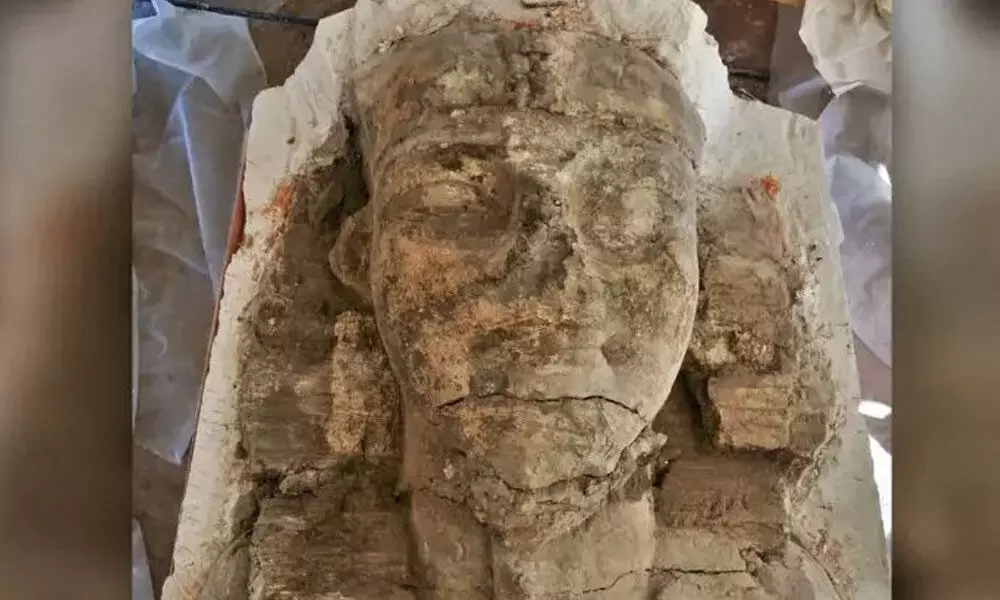Two Colossal Sphinx Statues Were Found Within An Ancient Egyptian Temple

The statue head of King Amenhotep III. (Egyptian Ministry of Tourism and Antiquities)
- Archaeologists in Egypt have found two huge limestone statues of King Amenhotep III that are shaped like sphinxes.
- The sphinxes were discovered in the ancient Egyptian capital of Thebes at King Amenhotep III's mortuary temple
According to the Egyptian Ministry of Tourism and Antiquities, archaeologists in Egypt have found two huge limestone statues of King Amenhotep III that are shaped like sphinxes. The sphinx-like statues, that were initially about 26 feet long when they were established for King Amenhotep III, an 18th-dynasty king whose ruling period around 1390 BCE to 1353 BCE is known for its peace and prosperity, and whose grandson was King Tutankhamun, were discovered by an Egyptian-German archaeological mission.
The sphinxes were discovered in the ancient Egyptian capital of Thebes at King Amenhotep III's mortuary temple, which was known as the 'temple of millions of years' by ancient Egyptians, according to a statement released by the Egyptian Ministry of Tourism and Antiquities on January 13.
Colossei, or larger-than-life statues, are sphinx-like Amenhotep III images. The archaeological mission that the Colossi of Memnon and Amenhotep III Temple Conservation Project – uncovered remains of columns and walls at the mortuary temple that ancient Egyptians had adorned with ceremonial and religious themes.
Mustafa Waziri, secretary-general of the Supreme Council of Antiquities mentioned that the two colossi depict Amenhotep III wearing a mongoose-shaped headpiece, a royal beard, and a thick necklace. The inscription stating that the beloved of Amun-Re, a reference to Amenhotep III, was discovered on the breast of one of the colossi during restoration.
Egyptolologist Hourig Sourouzian, the head of the archaeological mission, told Al-Monitor said that prior being destroyed by a severe earthquake in 1200 BC, this temple had a significant number of statues, models, and wall decorations. The team also discovered three well-preserved statues of the strong goddess Sakhmetwho is shown as a lady with a lion's head. The Sakhmet sculptures stood at the entrance to a peristyle court, an open internal courtyard.
Sourouzian explained that the newly unearthed pieces of wall relief in the peristyle depict new scenes of the Heb-Sed, a king's festival that began after 30 years of his rule and was recreated every three years afterwards.
Director-General of Research, Archaeological Studies, and Scientific Publication at the Ministry of Tourism and Antiquities in South Sinai, Abdel Rahim Rihan mentioned that due to the festival, the most important feasts for ancient Egyptians, celebrating the conclusion of the 30th year of the king's elevation to the throne.
Meanwhile, the archaeologists explained that the conservation project was divided into four segments. The crew surveyed the site, researched the ruins, and hopes to return all of the newly recorded objects to their original locations within the temple.
Next Story



















